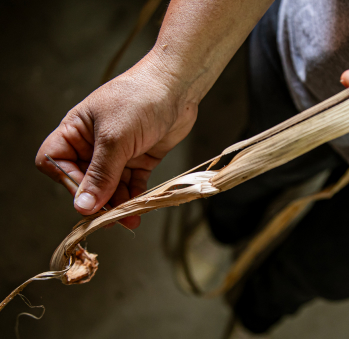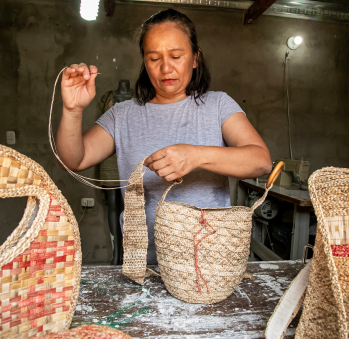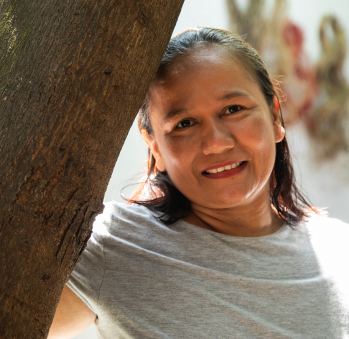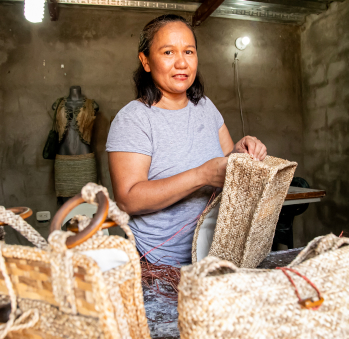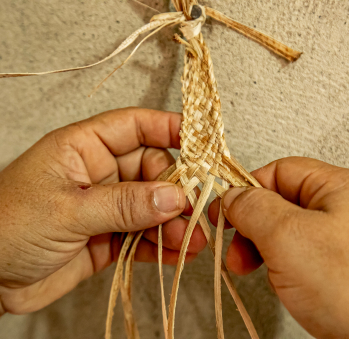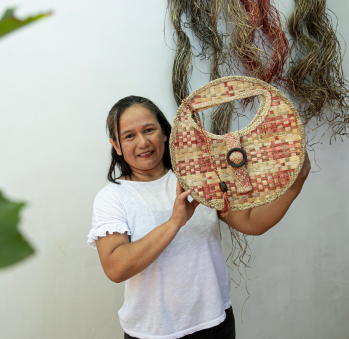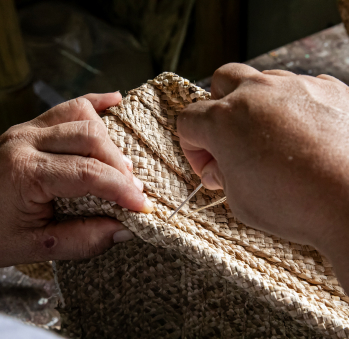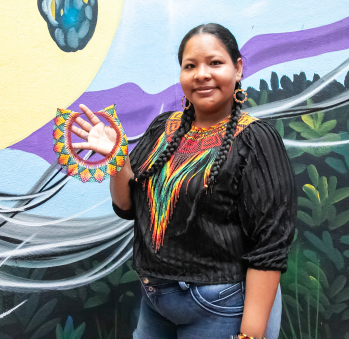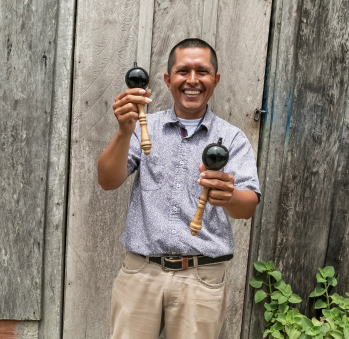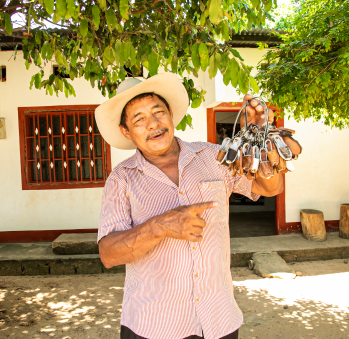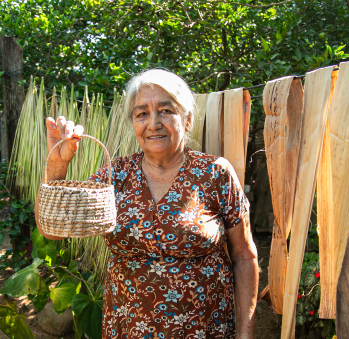María José Fernández
Workshop: Artes Damar
Craft: Tejeduría
Trail: Arauca Route
Location: Arauquita, Arauca
SCHEDULE YOUR VISIT
Calle 2 # 9d-74 Barrio Palmeras, Arauquita, Arauca
3183497165
darsocafe@hotmail.com
From the moment María José Fernández spotted a plantain fiber woven hat at a fair in Puerto Rondón, Arauca, discovering the best way to utilize this material became her fixation. It was 2009, she was studying Business Administration, and their class was tasked with identifying a product that showcased the richness of their land. That’s when she encountered this fiber, fell in love with it, and embarked on years of study and weaving.
Relying solely on internet videos, María José initiated her research. She learned about the global uses of plantain fibers and how they were employed in Colombia. Fearless of failure, she replicated everything she saw, knowing that mistakes were essential in achieving her goals. Throughout her trial-and-error journey, she experimented with various techniques: pounding the fibers like fique, combing or cutting them akin to calceta de plátano. However, she didn’t achieve the desired results, prompting her to persistently attempt online techniques until she resolved to invent her own method. Her aim was to create durable fibers capable of withstanding Arauca’s humid climate without succumbing to mold, unlike calceta de plátano fibers in the region.
María José acknowledged that her product lay in the fibers themselves. After two years of research and numerous attempts, she discovered that the key lay in knowing how to cut the plant. Once she found the method to obtain the ideal fibers, she delved into the weaving process. Initially, she experimented with macramé, which failed to meet her standards. She then ventured into braiding, drawing inspiration from the technique employed in sombreros vueltiaos made on the Colombian Caribbean coast. Grappling with paired braids, her husband, observing her frustration, joined forces with her until they grasped the technique together. As she continued braiding, she encountered the challenge of joining her short fibers to the weaving. Eventually, she learned to attach new fibers to the weaving instead of sewing them. Subsequently, she explored crochet—learned in high school—and later, mat weaving, which she used for crafting baskets and bags. Continuously learning, she is currently experimenting with plantain fiber ropes for weaving.
María José is a persistent artisan who dislikes replicating the work of others or her own designs. Recognizing that her clients are predominantly women, she aims to offer each of them a unique product. Hence, her most distinctive creations, her bags, exhibit considerable variety. She enjoys blending different sizes and styles of handles and weavings, and experimenting with dyeing the fibers in hues like red, dark green, black, or light blue. While she has conducted workshops on crochet, embroidery, and bracelet weaving for years, she only recently shared her technique for drawing plantain fibers in 2023. This craft is akin to her own child, born simultaneously with her daughter, Dara Sofía Carreño, when she commenced her research on this fiber. María José has nurtured her craft, witnessing its growth, and fiercely protects it. However, life continually presents new learning opportunities, pushing her to share her knowledge. This presents a new challenge for this artisan, who has always found a way to surmount.
Craft
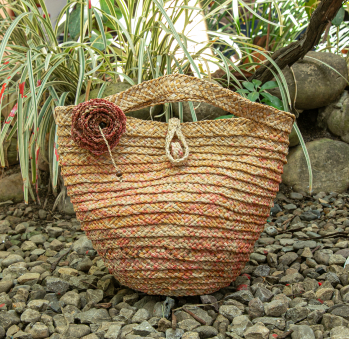
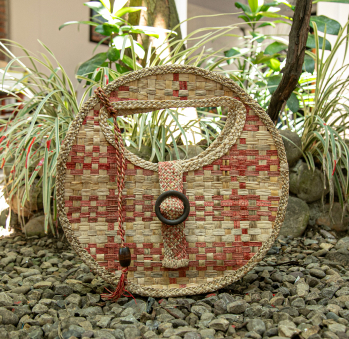
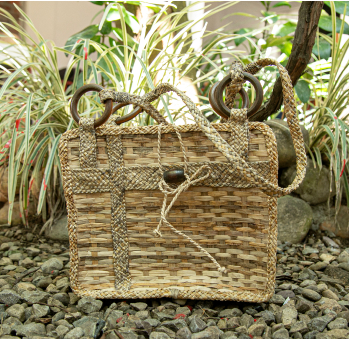

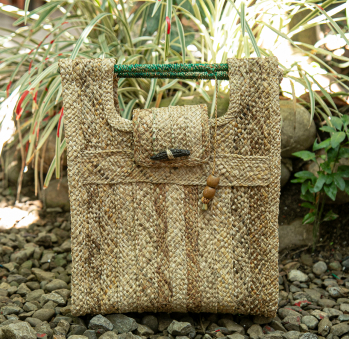
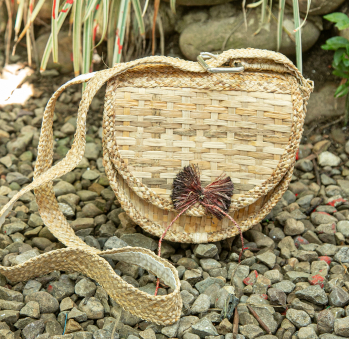
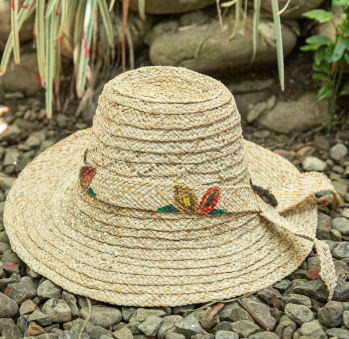

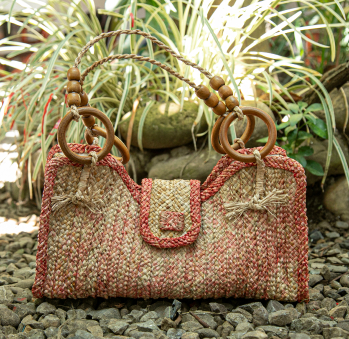









Artisans along the way
Artisans along the way
No puede copiar contenido de esta página








































